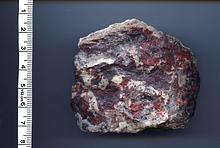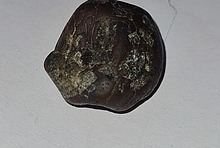Home PageAbout MindatThe Mindat ManualHistory of MindatCopyright StatusWho We AreContact UsAdvertise on Mindat
Donate to MindatCorporate SponsorshipSponsor a PageSponsored PagesMindat AdvertisersAdvertise on Mindat
Learning CenterWhat is a mineral?The most common minerals on earthInformation for EducatorsMindat ArticlesThe ElementsThe Rock H. Currier Digital LibraryGeologic Time
Minerals by PropertiesMinerals by ChemistryAdvanced Locality SearchRandom MineralRandom LocalitySearch by minIDLocalities Near MeSearch ArticlesSearch GlossaryMore Search Options
The Mindat ManualAdd a New PhotoRate PhotosLocality Edit ReportCoordinate Completion ReportAdd Glossary Item
Mining CompaniesStatisticsUsersMineral MuseumsClubs & OrganizationsMineral Shows & EventsThe Mindat DirectoryDevice SettingsThe Mineral Quiz
Photo SearchPhoto GalleriesSearch by ColorNew Photos TodayNew Photos YesterdayMembers' Photo GalleriesPast Photo of the Day GalleryPhotography
╳Discussions
💬 Home🔎 Search📅 LatestGroups
EducationOpen discussion area.Fakes & FraudsOpen discussion area.Field CollectingOpen discussion area.FossilsOpen discussion area.Gems and GemologyOpen discussion area.GeneralOpen discussion area.How to ContributeOpen discussion area.Identity HelpOpen discussion area.Improving Mindat.orgOpen discussion area.LocalitiesOpen discussion area.Lost and Stolen SpecimensOpen discussion area.MarketplaceOpen discussion area.MeteoritesOpen discussion area.Mindat ProductsOpen discussion area.Mineral ExchangesOpen discussion area.Mineral PhotographyOpen discussion area.Mineral ShowsOpen discussion area.Mineralogical ClassificationOpen discussion area.Mineralogy CourseOpen discussion area.MineralsOpen discussion area.Minerals and MuseumsOpen discussion area.PhotosOpen discussion area.Techniques for CollectorsOpen discussion area.The Rock H. Currier Digital LibraryOpen discussion area.UV MineralsOpen discussion area.Recent Images in Discussions
Field CollectingPetrified Wood in the Northeast and the Mid-Atlantic

12th May 2007 23:01 UTCAndy Davenport
Thanks-

12th May 2007 23:42 UTCChester S. Lemanski, Jr.
New Jersey agates came from the trap rock quarries in years past, not more recently to the best of my knowledge. Carnelian was found in a creek in the Watchung Mountains, related to the basalt flows that comprise the mountains. Again, do a search in Mindat for "Carnelian."
13th May 2007 00:57 UTCFred E. Davis
I did collect some plant fossils (no trees, though) along Narragansett Bay in Portsmouth, Rhode Island. These were mostly calimites.

13th May 2007 13:46 UTCAndy Davenport
13th May 2007 14:47 UTCDavid Von Bargen Manager
http://www.mindat.org/show.php?id=8018&ld=1&pho=

13th May 2007 17:11 UTCasdaven
Thanks-

13th May 2007 17:21 UTCAlan Plante
Regards
Alan
13th May 2007 17:26 UTCDavid Von Bargen Manager
Mindat does not claim to be comprehensive.
See also Beste's articles:
http://missourigeologists.org/Links.htm

13th May 2007 21:52 UTCasdaven
Thanks-

14th May 2007 18:09 UTCJoe D.
I still collect Petrified Wood in Pa & Del. The strip mines of Pa and the eastern river and stream beds still produce good wood if you take the time to research the locations mentioned in old books. The water courses provide the best chance of finding material with different colors of replacement Silica of the Quartz family. Farm fields are also a good place to look, if you can still find any farm fields that allow strangers to collect in.
The Odessa area of Delaware still provides plenty of good pieces of Wood when you find a new housing development to search. Maryland should be the same. Just don't expect to find any where the ocean was covering everything back in the days of funny looking critters. Plenty of shark teeth and other critters but not too many trees got covered by mud or ash before they deteriorated to provide our Petrified Wood. Do some geologic research to see where old forests once stood and you will be in business.
Joe D.

14th May 2007 20:18 UTCAndy Davenport
Thanks-
14th May 2007 22:17 UTCDavid Von Bargen Manager
http://www.mgs.md.gov/esic/brochures/fossils/index.html
Maryland has produced plant fossils from the carboniferous to cretaceous.
http://www.mgs.md.gov/esic/fs/fs7.html
(Look for counties with plants)
Also state geological map for a little more detail.
http://www.mgs.md.gov/esic/geo/index.html
With the geological map you can narrow down the potential areas to look in. Then you need to dig up old geological papers on the paleontology of these areas (a good library can help here). Not all of the plant fossils will be silicified, but these can be a starting point to winnow out probable non productive areas (also remember that things are eroded and redeposited down stream).

15th May 2007 11:26 UTCasdaven

15th May 2007 18:22 UTCJoe D.
Just because it's" private Property" doesn't rule out ever collecting on it. I do lots of research on a new area and take the time to find out who owns the land, then I contact them and not only ask permisiion but volunteer any information I happen to come accross on the land. I have gained access to previously "out of bounds" areas by just talking to the owners and sharing information I know about their land. Just showing interest in the area and talking to the owners can make the difference. If you don't ask you can never get permission. A lot of owners just want to know who is on their land and will allow access if you show respect for them and their land. Of course some won't and you have to respect that and move on. I myself have never been turned down an opportunity to collect where I have introduced myself and asked permission. I still have access priveldges to a nature preserve that is off limits to other collectors just because I shared a lot of information on the past history of the land with it's owners that they were not aware of.
Most of my collecting is in water courses and it pays to know the law of the area you want to collect in. I don't dig in the banks of any stream. Even dry beds should have their banks left alone where they pass through private lands.
Research takes time but it usually pays off in dividends in the long run. If nothing else you learn a little more about our Earth. God bless the modern "Search Engines" like Google and Google Book Search.
Joe D.

15th May 2007 21:58 UTCAndy Davenport
Thanks-

18th May 2007 18:38 UTCDebbie Sprouse

19th May 2007 12:53 UTCSteve Cantiello
Oh yea in Gilboa,NY there is a display of pertrified wood that was found when they built the dam.I visited the site back in the 90's.A small pull off area on a road with several tree trucks there.Proably could google Gilboa &petrified wood and come up with more on this.
Steve

23rd May 2007 21:57 UTCJane Jennings

14th Jun 2007 21:22 UTCAnita

14th Dec 2007 16:59 UTCTim Fisher

16th Dec 2007 01:30 UTCWayne Gilmore

22nd Jan 2009 02:54 UTCchrystal

22nd Jan 2009 04:15 UTCsteven garza
Except for Glacieral till from canada, there is no igneous rocks in Ohio; that being said AND taking the said till into account, pyrite is found in all 3!
Your friend, Steve

23rd Jan 2009 13:35 UTCGuy L. Davis

8th Mar 2009 14:16 UTCLance Ingram
Contact me for further info.
Thanks, Lance

2nd Sep 2012 13:17 UTCMIKES1964

26th Mar 2014 01:08 UTCRobert Ertman
26th Mar 2014 16:07 UTCHarold Moritz 🌟 Expert
Although known for over a century, pieces well-enough preserved for scientific description were only recently found (all private property, but there is a farm at the best site that sells their local produce, so maybe they would give permission).
At the visitor center in Painted Desert-Petrified Forest National Park (Arizona) is a wall display of petrified wood from pretty much every US state (not too sure about northern New England), but it was missing one from Connecticut, which I will have to remedy someday....

25th Oct 2014 04:55 UTCJpn1376
-------------------------------------------------------
> NORTH ATTLEBORO MASS HAS IT AS DOES WORSTER MASS
> AND PAWTUCKET RI PORTSMITH RI PIKESVILLE MASS BUT
> YOU REALLY NEED TO LOOK
Would you be so kind to spot burn for North Attleboro? If not I understand.

25th Oct 2014 04:57 UTCJpn1376

13th Dec 2014 09:11 UTCCliff 1963
The research I've done so far haven't exposed any examples that look like mine, which is more "real wood" looking. I'm hoping to learn as much as I possibly can about what I've got and any information would be greatly appreciated.
Thank you very much in advance.
-Cliff

15th Apr 2016 19:13 UTCTunaman

15th Apr 2016 19:22 UTCTunaman




Mindat.org is an outreach project of the Hudson Institute of Mineralogy, a 501(c)(3) not-for-profit organization.
Copyright © mindat.org and the Hudson Institute of Mineralogy 1993-2024, except where stated. Most political location boundaries are © OpenStreetMap contributors. Mindat.org relies on the contributions of thousands of members and supporters. Founded in 2000 by Jolyon Ralph.
Privacy Policy - Terms & Conditions - Contact Us / DMCA issues - Report a bug/vulnerability Current server date and time: April 18, 2024 13:54:37
Copyright © mindat.org and the Hudson Institute of Mineralogy 1993-2024, except where stated. Most political location boundaries are © OpenStreetMap contributors. Mindat.org relies on the contributions of thousands of members and supporters. Founded in 2000 by Jolyon Ralph.
Privacy Policy - Terms & Conditions - Contact Us / DMCA issues - Report a bug/vulnerability Current server date and time: April 18, 2024 13:54:37











